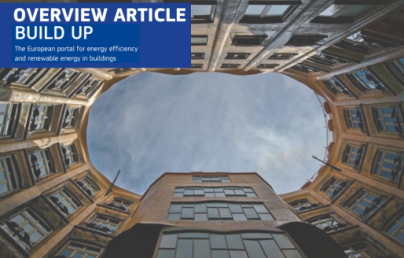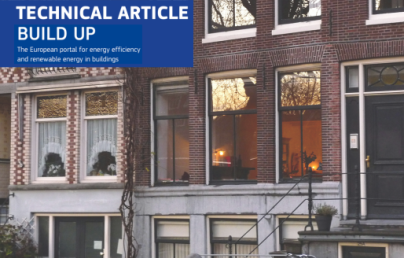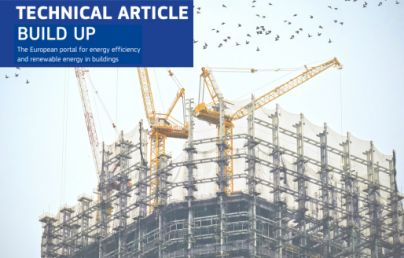Technical Article - The digital era in building energy performance: the Auto-DAN project
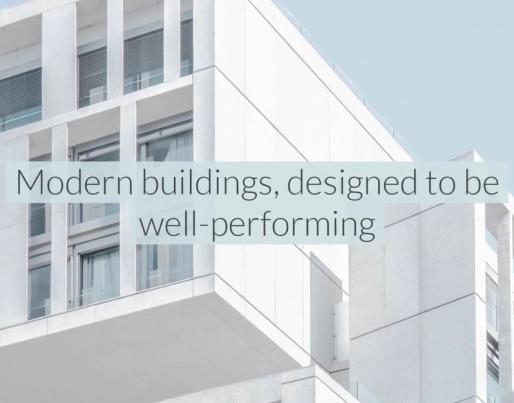
Technical Article - The digital era in building energy performance: the Auto-DAN project
Authors:
Solari Celina, Fuggini Clemente, Spigliantini Giorgia (RINA Consulting S.p.A.).
Note: opinions in the articles are of the authors only and do not necessarily reflect the opinion of the EU.
The energy performance of buildings (both residential and non-residential) is crucial for the ever-increasing demands, costs of the energy market, and its balance, especially during the all-encompassing and (reality-driven) demanded transition to clean and sustainable sources of energy [1,2]. However, the accurate depiction of buildings’ energy consumption is still challenging, as appliances and devices that are not part of technical building systems (e.g., heating, ventilation) are generally not included in these assessments, for example Swedish building regulation BBR [3]. Despite the ever-improving design of appliances in terms of energy efficiency, their inclusion in the accurate understanding of the buildings’ actual, real-life energy performance is important because this helps to show the precise energy profile (performance and consumption) of the building and can lead the users/occupants to make better-informed choices, both in terms of investment and in terms of usage and maintenance.
Auto-DAN is a H2020 EU-funded project that aims to contribute to the gap in the energy management of the buildings, by exploiting emerging digital technologies for enabling the self-optimisation of building energy consumption and enhancing the overall energy performance. A variety of digital technologies have been adopted and cost-effective technological solutions have been developed, while six demo sites located around Europe are being set up for testing and validation.
Methodology and concept design
Over recent years, disruptive and mainly digital technologies have emerged in the scope of buildings’ energy efficiency [4], providing advanced solutions for the enhancement of energy performance and self-optimisation of existing buildings. Among these, the concepts of smart building and the smart grid, and ICT technologies are seen as the drivers for smarter homes and buildings that will integrate and optimise distributed energy generation and storage, smart metering of assets, Internet of Things (IOT), cloud technology, cyber-currencies and blockchain. The current project has cornerstones, the digital technologies for delivering to the societies an advanced toolkit of high efficiency. the digital technologies for delivering to the societies an advanced toolkit of high efficiency.
The Auto-DAN project is focussing on energy profiling of the whole building’s operational phase, including the calculation of energy consumption for the energy systems and appliances. The first step of the methodological approach (shown in Figure 1) is the installation of smart hardware infrastructure to the buildings for the smart metering of consumption and the provision to building users of the information they need to improve their energy behaviour at an appliance and system level, as well as improving their internal comfort.
The collected data will consist of the necessary input for the data analysis platform (iSCAN), which can collect real-time data from multiple sources and deploy suitable Machine-Learning (ML) algorithms (based upon the Auto-DAN operational occupancy library). The ML capabilities and the interoperable software architecture can create customised alerts based on user-defined rules when certain events occur, enabling the building users to adapt in case of comfort issues or appliance failures, while simultaneously communicating to the occupants (among others via user dashboards situated in the building, social media applications to the occupant's smartphone or smart device) to enable better appliance control and achieve energy optimisation.
The interoperable software architecture will be based on the Digital Occupancy Model and Digital Twin modelling. The Digital Occupancy Model can disaggregate energy loads at a system and appliance level assisted by agent-based occupancy models (created within the project), while identifying local energy bill reduction opportunities. Digital Twin modelling can be used for accurate evaluation of energy performance and forecasting, generation of operational improvements and energy conservation measures with reliable returns.
The final step of the methodology is the creation of a new dynamic (and continuous) self-assessment framework that considers the actual energy performance of a building, the quality and operation of appliances/systems installed, user operational habits and the smart readiness indicator (SRI) of a building. The input is derived from the monitoring of the energy consumption at the building level, the disaggregated monitoring at an appliance/system level, while the decision support system is based on the interpretation and incorporation of existing EU energy regulations (e.g., EPBD, Ecodesign, SRI, and Energy Labelling).

Figure 1. The concept diagram for the Auto-DAN solution
The basic technical goal of the project is to produce a technological solution that can self-assess and self-optimise buildings across the EU, via solutions routed in augmented intelligence which can exhibit their replicability after advanced testing and validation. In summary, the Auto-DAN main technical objectives are as follows:
- Creation of a flexible smart hardware infrastructure that can be applied to all small-to-medium sized buildings.
- Development of an interoperable software architecture, able to provide all the analytical capabilities needed to self-assess and self-optimise buildings.
- Delivery of Augmented Intelligence (AuI)-based solutions for the enablement of the buildings and their end-users to become self-optimising.
- Creation of a live self-energy assessment method that incorporates operational monitoring, appliance/system performance and smart capabilities, leading to a more accurate current energy assessment procedures that the current ones.
Demonstration cases
The Auto-DAN project has prepared for the experimental validation of the methodology at six different demonstration cases across Europe. The six demonstration sites have been chosen based upon the wide variety of building uses and energy consuming products, including different environmental and weather conditions at the sites. The main goal is the accurate calculation of the buildings’ energy consumption. In Table 1, the types of appliances and energy systems which are installed at each demonstration site is summarised.
Auto-DAN solutions testing, verification and demonstration will be fully synchronised with the project’s objectives and will follow the steps below:
- Collection of input data of pilot cases (geometry, measured data, other energy data, etc).
- Collection and development of physical building model towards Auto-DAN digital twin development.
- Building asset rating — EPC and appliance installed energy label evaluation.
- Interaction with the end-users, definition of KPIs to be monitored/benchmarked per each demo.
- Self-energy assessment and maintenance/renovation roadmaps proposition validation.
- Feedback gathering from the different type of users.
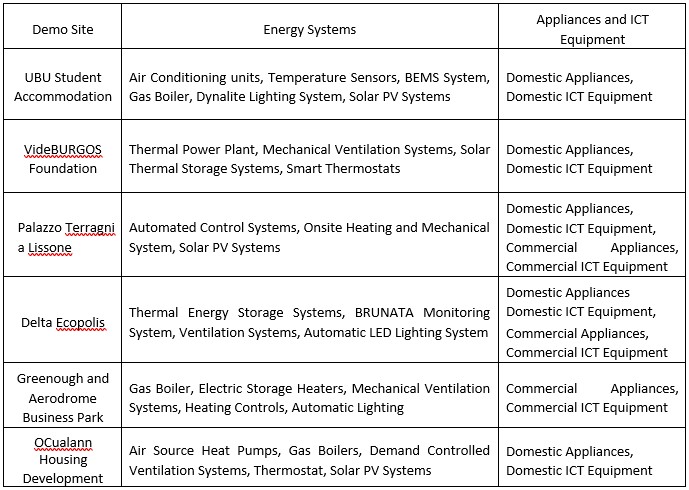
Table 1. Summary of the energy systems, appliances, and ICT Equipment for each of every demo case
Each case study, that will be validated at the demonstration site and their respective objectives are described below:
(Burgos, Spain) UBU Student Accommodation:
 This student residence was constructed in 2000 with temperature sensors situated throughout the building, a light BMS to start and stop the boiler, a ventilation and air conditioning system onsite, and a gas boiler that also powers the domestic hot water system which feeds approximately 160 residences. The main objective would be to improve the existing monitoring network, via the installation of a more advanced BMS system. The absence of an assessment and an electricity consumption control system will be tackled by finding the best operational optimisation solution to offset those thermal losses without expensive renovation. Finally, this demo case will pay value to the young generation of students who are the residents, and their opinion will be taken into consideration as feedback to the co-design of the project.
This student residence was constructed in 2000 with temperature sensors situated throughout the building, a light BMS to start and stop the boiler, a ventilation and air conditioning system onsite, and a gas boiler that also powers the domestic hot water system which feeds approximately 160 residences. The main objective would be to improve the existing monitoring network, via the installation of a more advanced BMS system. The absence of an assessment and an electricity consumption control system will be tackled by finding the best operational optimisation solution to offset those thermal losses without expensive renovation. Finally, this demo case will pay value to the young generation of students who are the residents, and their opinion will be taken into consideration as feedback to the co-design of the project.
(Burgos, Spain) VideBURGOS Foundation:
 These blocks are social housing constructed in 2007 and are near the UBU campus. Although not considered to be very inefficient in comparison with other residential buildings of the same age in the area. For the needs of heating and domestic hot water, there is a thermal power plant on the roof, while the emitter type is radiators, and a solar thermal system is onsite. The ventilation system is communal, and a smart thermostat is installed in each residence. The differences between north-facing dwellings and west-facing are significant, and the main objective of Auto-DAN here is to improve the energy performance/thermal comfort of the inhabitants of the north-facing dwellings via the digital twin and Auto-DAN audit, along with enhancement of buildings’ energy systems performance. Also, the selection of this case is at the validation of these social housing properties to ensure that the solution can be applicable to similar social housing operational behaviours across the EU.
These blocks are social housing constructed in 2007 and are near the UBU campus. Although not considered to be very inefficient in comparison with other residential buildings of the same age in the area. For the needs of heating and domestic hot water, there is a thermal power plant on the roof, while the emitter type is radiators, and a solar thermal system is onsite. The ventilation system is communal, and a smart thermostat is installed in each residence. The differences between north-facing dwellings and west-facing are significant, and the main objective of Auto-DAN here is to improve the energy performance/thermal comfort of the inhabitants of the north-facing dwellings via the digital twin and Auto-DAN audit, along with enhancement of buildings’ energy systems performance. Also, the selection of this case is at the validation of these social housing properties to ensure that the solution can be applicable to similar social housing operational behaviours across the EU.
(Lissone, Italy) Palazzo Terragni:
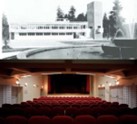 The Palazzo Terragni at Lissone has been included as a demonstration site to showcase the non-invasiveness of the Auto-DAN solution for cases of historic public-property building. It is an historic building used as an office building as well as for art events and theatre shows and includes an auditorium.
The Palazzo Terragni at Lissone has been included as a demonstration site to showcase the non-invasiveness of the Auto-DAN solution for cases of historic public-property building. It is an historic building used as an office building as well as for art events and theatre shows and includes an auditorium.
This demo site will highlight the applicability of the Auto-DAN solution to conservation buildings across Europe, by observing how the energy efficiency is affected by periods of high occupancy within the auditorium. Moreover, the observation of the occupants’ potential contribution to the poor energy efficiency of the building will be conducted, along with the provision of monitoring equipment for the building and the correct use of the energy systems (solar PV systems).
(Milan, Italy) Delta Ecopolis:
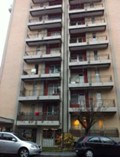 Delta Ecopolis consists of three separate buildings (32 apartments and 2 offices), built between 1968 and 1971 and renovated between 2012 and 2013. The facades have been renovated and had received external wall insulation, while the common and single thermal power station was rebuilt. The emission terminals in all the accommodation are radiators with thermostatic valves and heat distributors, and each radiator is monitored by a monitoring system, which collects data from each radiator and each flat. In each apartment there is a thermometer to control the temperature passively, besides this thermometer the end-users do not have a good understanding of how much energy its appliances are using and at what times. The intention of Auto-DAN is to provide a complete and advanced monitoring solution to observe the efficiency of the renovation and evaluate its effectiveness to promote replication in other buildings managed by Delta Ecopolis. As this building typology is quite common in Milano, this can enhance the local replication potential. In this case the contribution of the end-users is important, as they will participate in designing the solutions and the implementation of the project.
Delta Ecopolis consists of three separate buildings (32 apartments and 2 offices), built between 1968 and 1971 and renovated between 2012 and 2013. The facades have been renovated and had received external wall insulation, while the common and single thermal power station was rebuilt. The emission terminals in all the accommodation are radiators with thermostatic valves and heat distributors, and each radiator is monitored by a monitoring system, which collects data from each radiator and each flat. In each apartment there is a thermometer to control the temperature passively, besides this thermometer the end-users do not have a good understanding of how much energy its appliances are using and at what times. The intention of Auto-DAN is to provide a complete and advanced monitoring solution to observe the efficiency of the renovation and evaluate its effectiveness to promote replication in other buildings managed by Delta Ecopolis. As this building typology is quite common in Milano, this can enhance the local replication potential. In this case the contribution of the end-users is important, as they will participate in designing the solutions and the implementation of the project.
(Dublin, Ireland) Greenogue & Aerodrome Business Park:
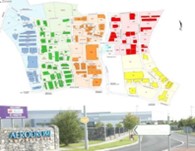 A business park located in Rathcoole and constructed in 1999 is consisting of over 350 buildings, mainly used by small businesses that are offices, manufacturers, or storage providers. Despite that, most buildings are small/medium sized and were not designed to be heated, many of them are now being used as heated spaces and most buildings are ambient temperature warehouses. The design of this case is targeting the testing of the offsetting capabilities of Auto-DAN by improving the operational performance in relation to the inefficient building elements. Advanced monitoring systems and smart appliances will be deployed to improve the smart capability of the site. The wider goal is to assist small businesses, which makes up most of the businesses in the EU, in improving their energy footprint by an accurately designed strategy, having considered also the existed lack of the SME’s finance ability towards these actions.
A business park located in Rathcoole and constructed in 1999 is consisting of over 350 buildings, mainly used by small businesses that are offices, manufacturers, or storage providers. Despite that, most buildings are small/medium sized and were not designed to be heated, many of them are now being used as heated spaces and most buildings are ambient temperature warehouses. The design of this case is targeting the testing of the offsetting capabilities of Auto-DAN by improving the operational performance in relation to the inefficient building elements. Advanced monitoring systems and smart appliances will be deployed to improve the smart capability of the site. The wider goal is to assist small businesses, which makes up most of the businesses in the EU, in improving their energy footprint by an accurately designed strategy, having considered also the existed lack of the SME’s finance ability towards these actions.
(Dublin, Ireland) OCualann Cohousing Cooperative:
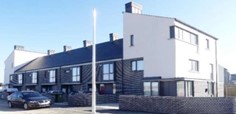 OCualann is a housing co-operative with approved housing body status, it is a non-profit company and charity aiming at selling fully integrated, cooperative homes at affordable prices for sustainable communities. They are characterised as A-Rated homes, containing highly rated household appliances, and having building products of high standard (under the Ecodesign and energy labelling systems), while the domestic properties are heated by air source heat pumps and each property contains a demand-controlled ventilation system. The developmental pipeline for OCualann is based on separate housing estates in development in Dublin, and the building properties usually contain Solar PV panels. Among the objectives of this demo case are the verification of Auto-DAN solution across different housing estates with a variety of building products and the deployment of energy smart meters to remedy a lack of metering infrastructure. The overarching goal is the spotlighting of the Auto-DAN solution’s applicability for energy efficiency of the buildings, including the analysis of the correct use for the solar energy systems.
OCualann is a housing co-operative with approved housing body status, it is a non-profit company and charity aiming at selling fully integrated, cooperative homes at affordable prices for sustainable communities. They are characterised as A-Rated homes, containing highly rated household appliances, and having building products of high standard (under the Ecodesign and energy labelling systems), while the domestic properties are heated by air source heat pumps and each property contains a demand-controlled ventilation system. The developmental pipeline for OCualann is based on separate housing estates in development in Dublin, and the building properties usually contain Solar PV panels. Among the objectives of this demo case are the verification of Auto-DAN solution across different housing estates with a variety of building products and the deployment of energy smart meters to remedy a lack of metering infrastructure. The overarching goal is the spotlighting of the Auto-DAN solution’s applicability for energy efficiency of the buildings, including the analysis of the correct use for the solar energy systems.
References
[1] https://www.europarl.europa.eu/news/it/press-room/20230206IPR72112/energy-performance-of-buildings-climate-neutrality-by-2050
[2] https://eurocities.eu/latest/energy-performance-of-buildings-a-hope-for-climate/
[3] https://www.switch-asia.eu/site/assets/files/2287/building_energy_standards_and_labelling_in_europe.pdf
[4] https://www.apec.org/docs/default-source/publications/2022/1/accommodating-disruptive-technology-into-re-ee-policies-for-energy-security/222_ewg_accommodating-disruptive-technology-into-re-ee-policies-for-energy-security.pdf?sfvrsn=7a356990_2
